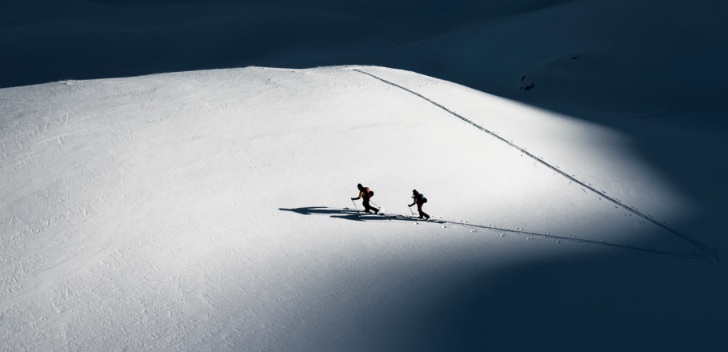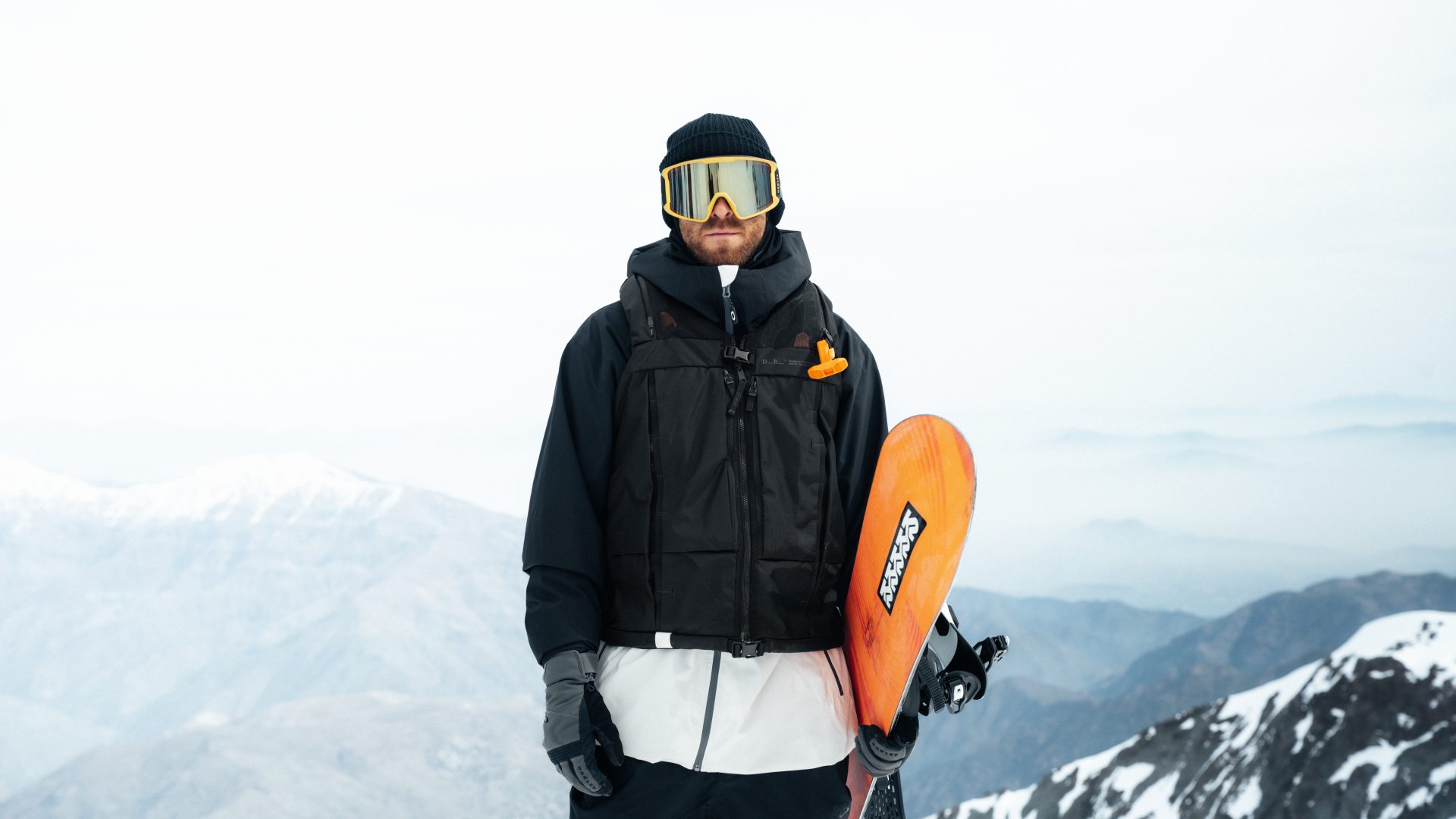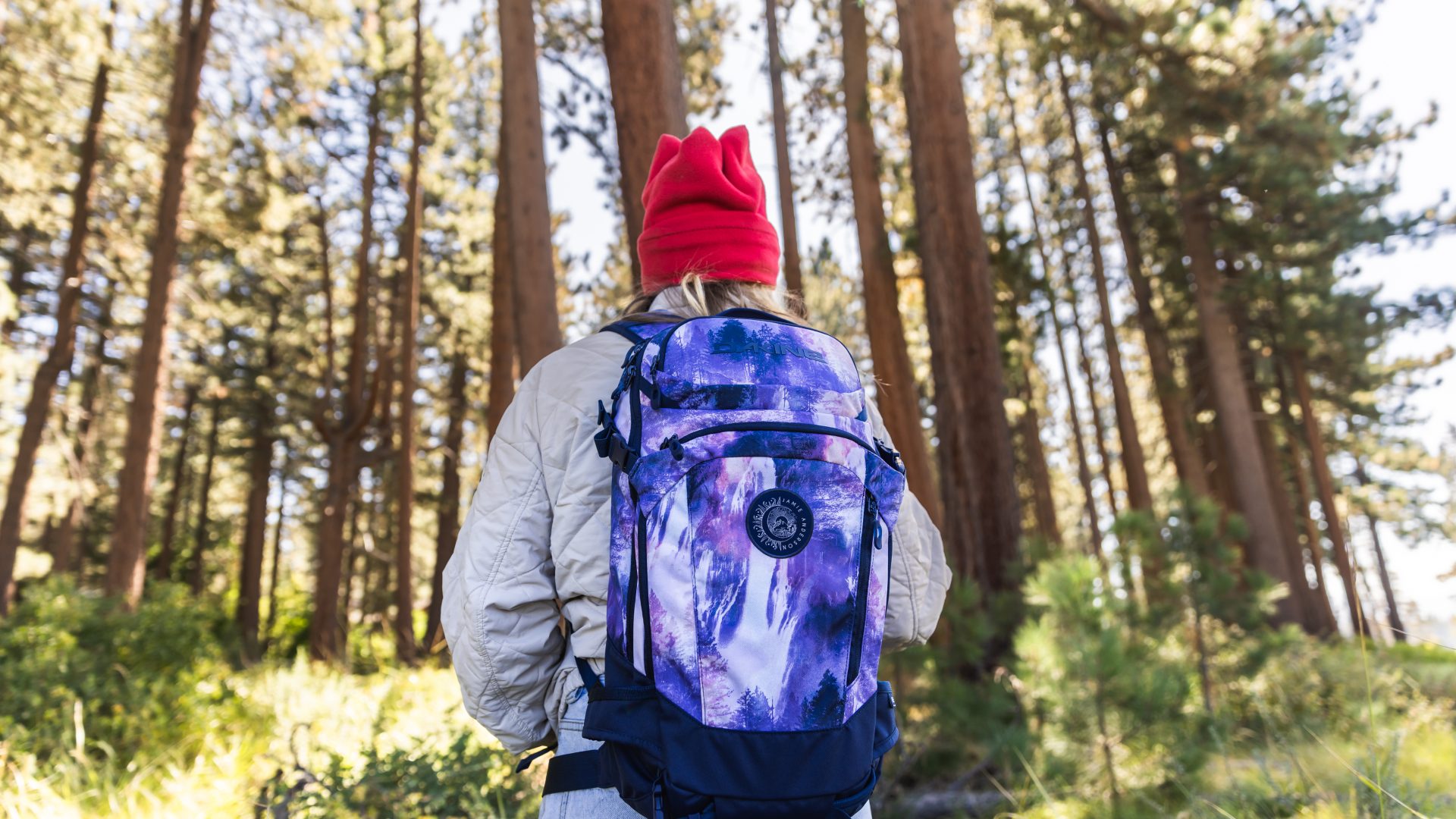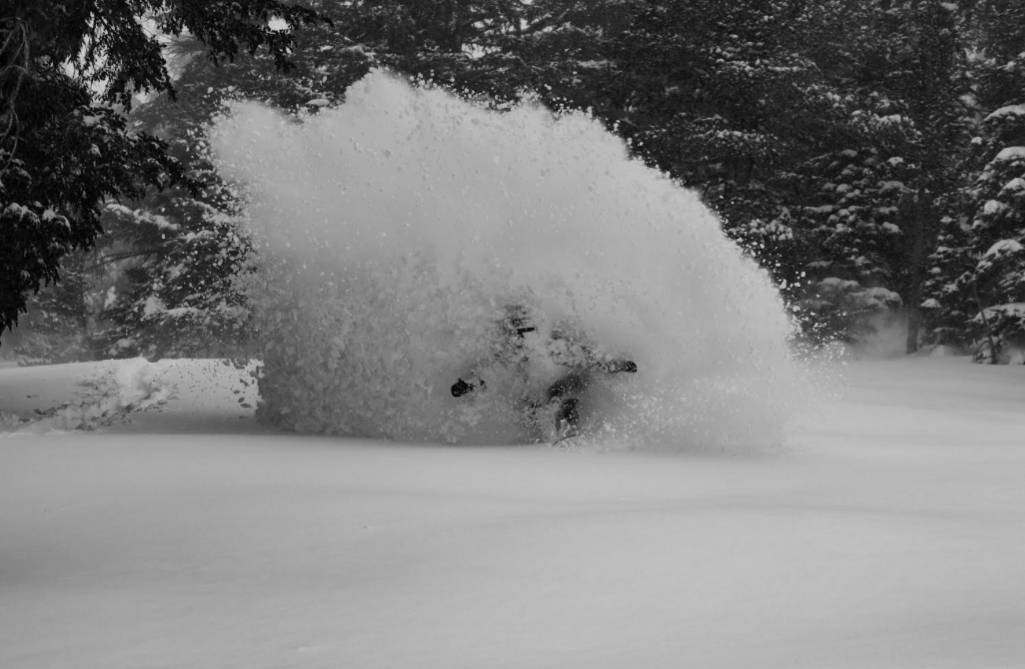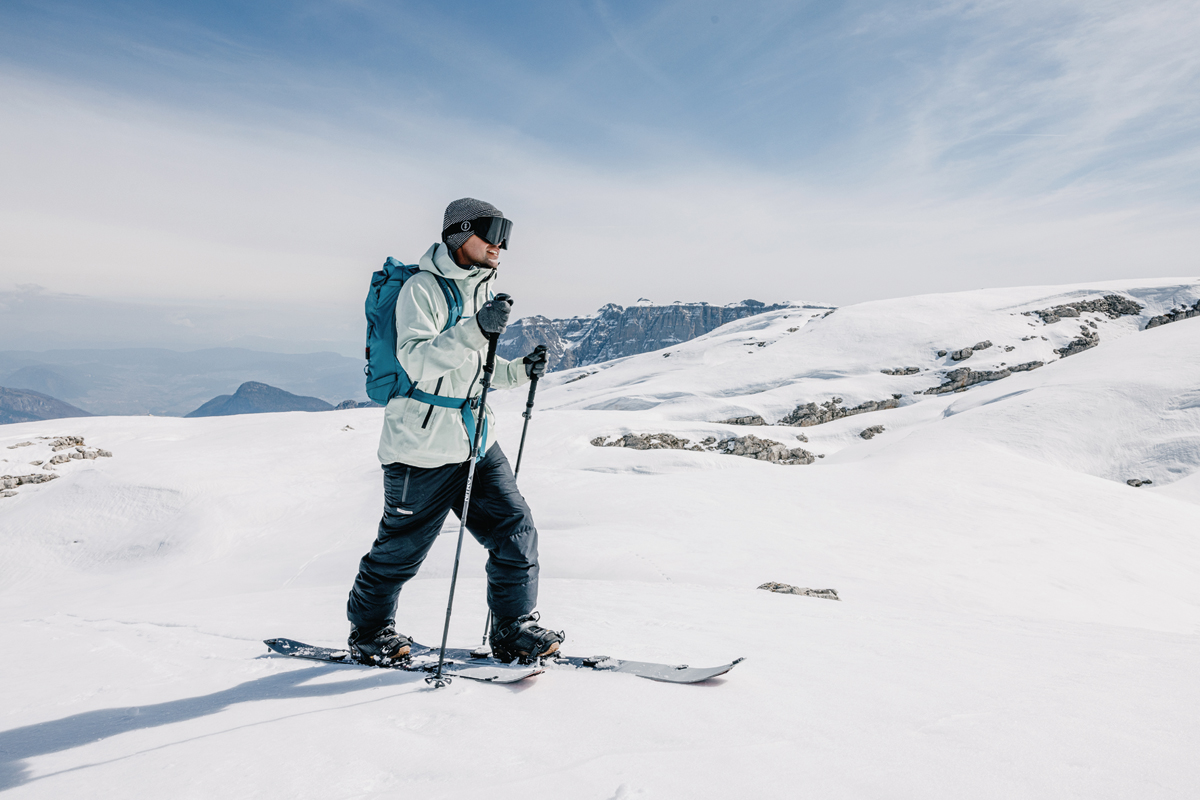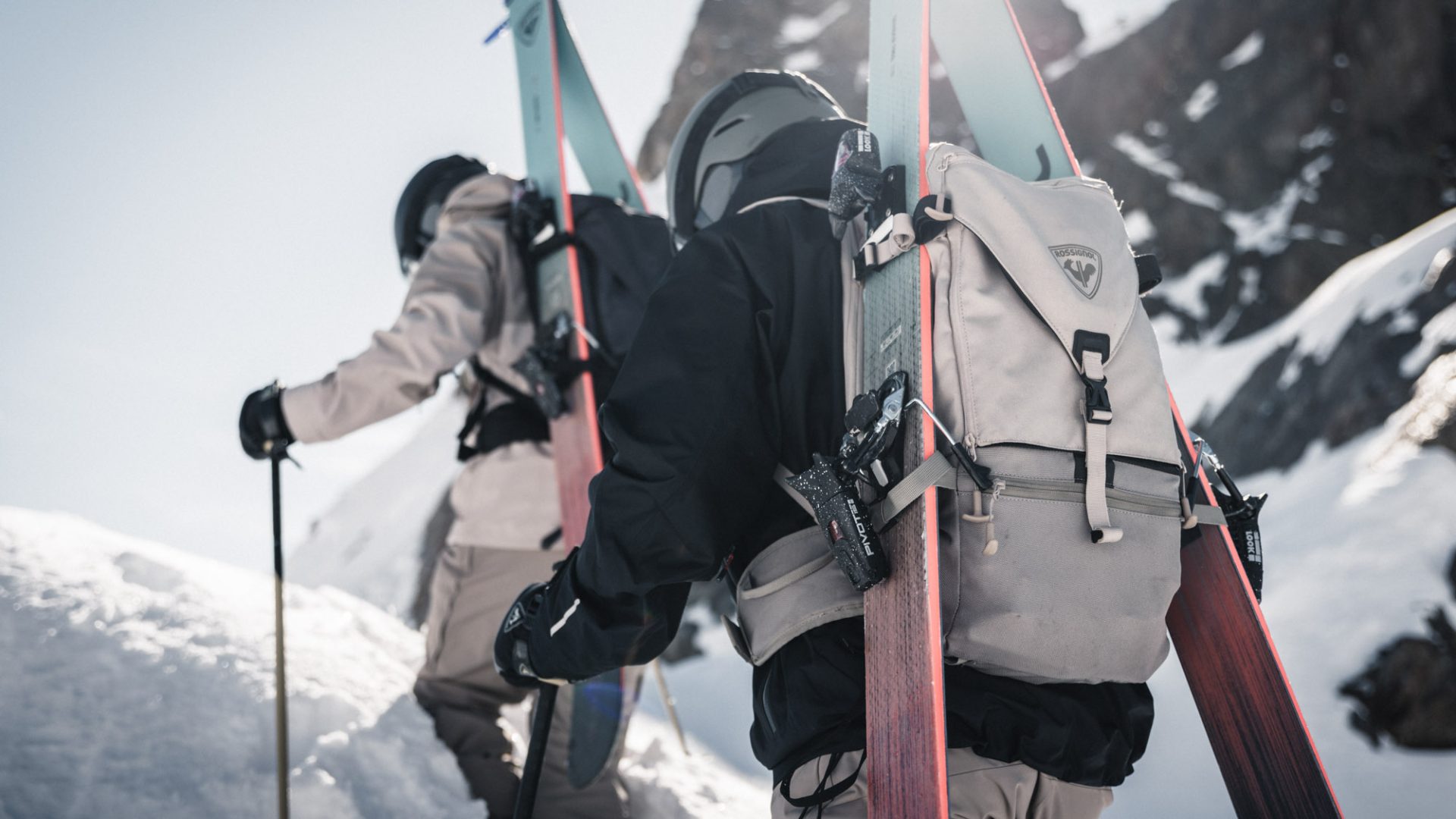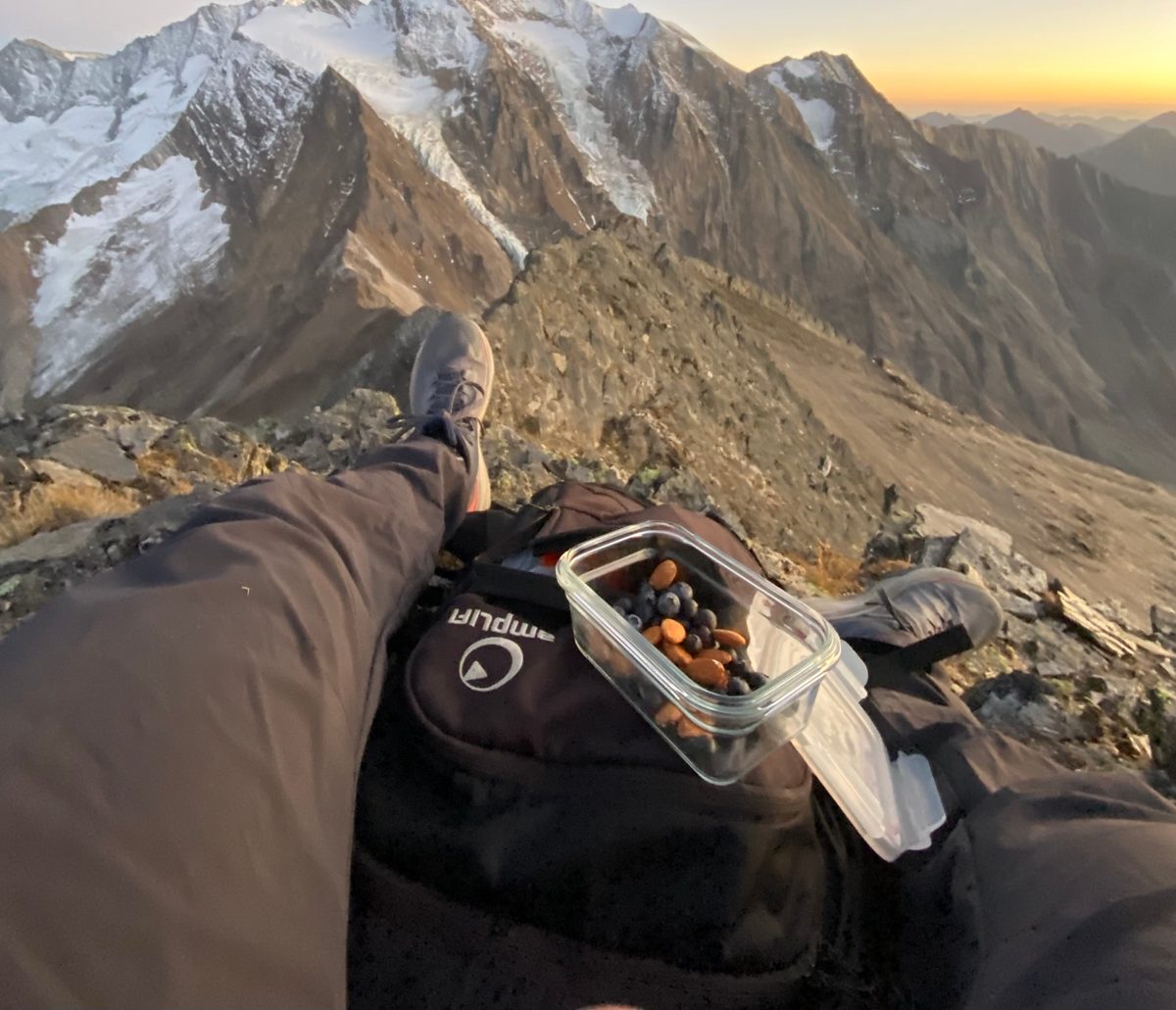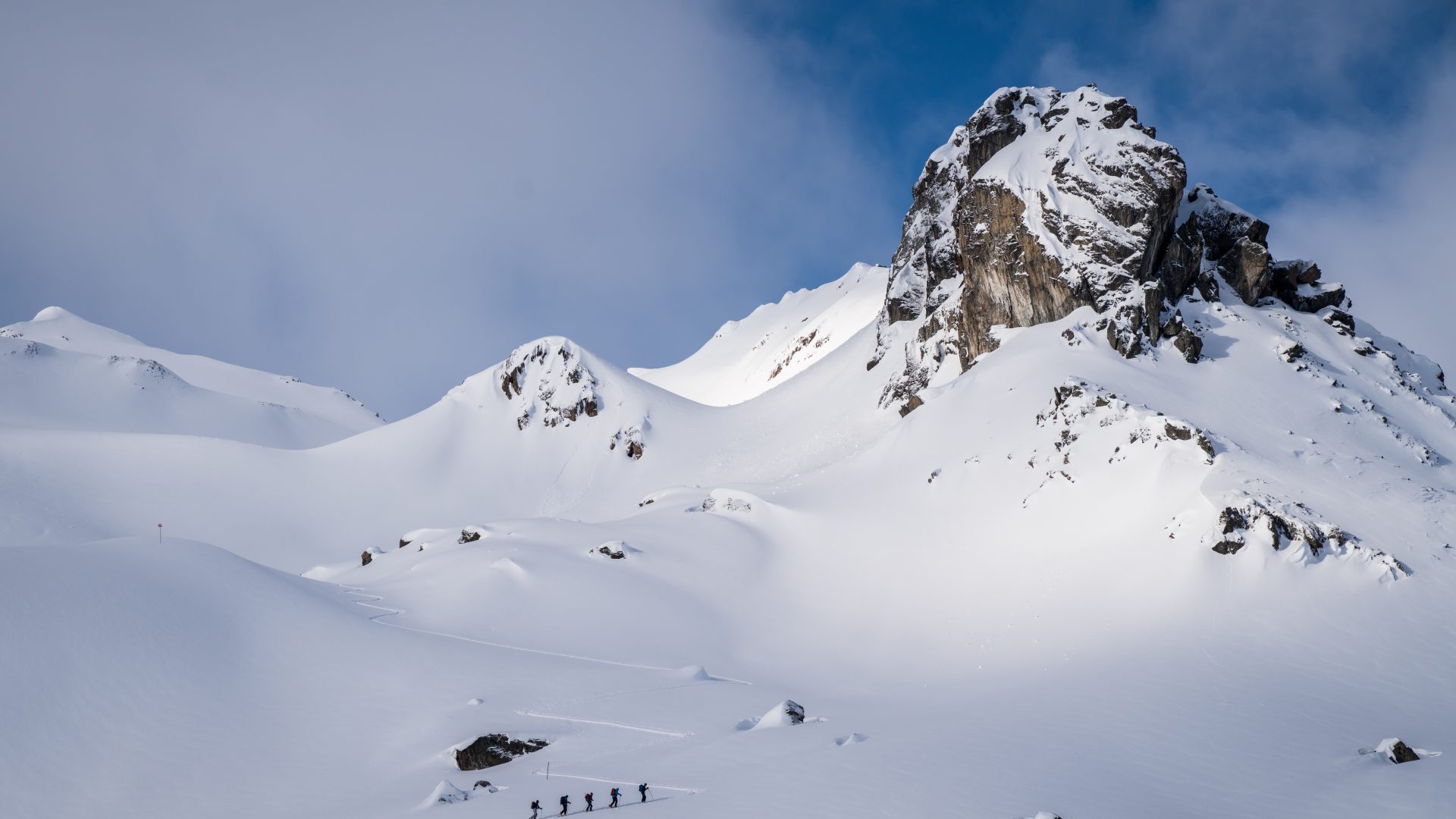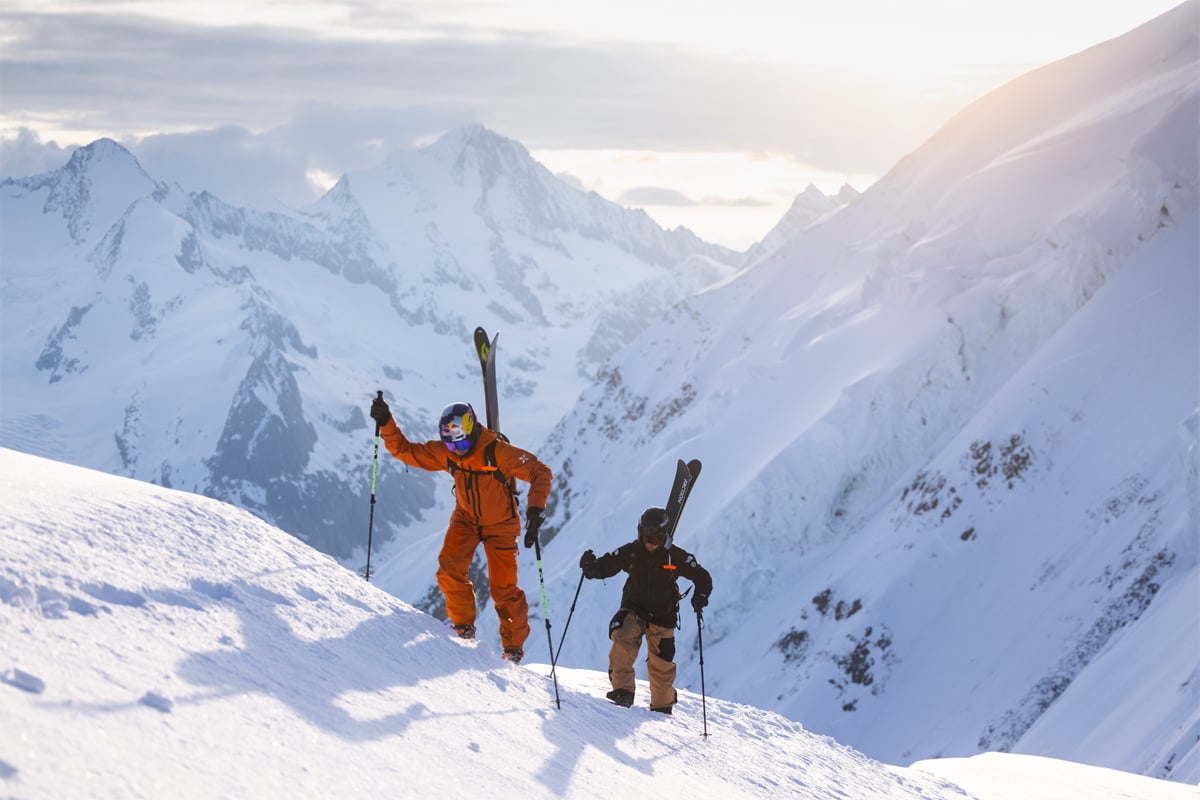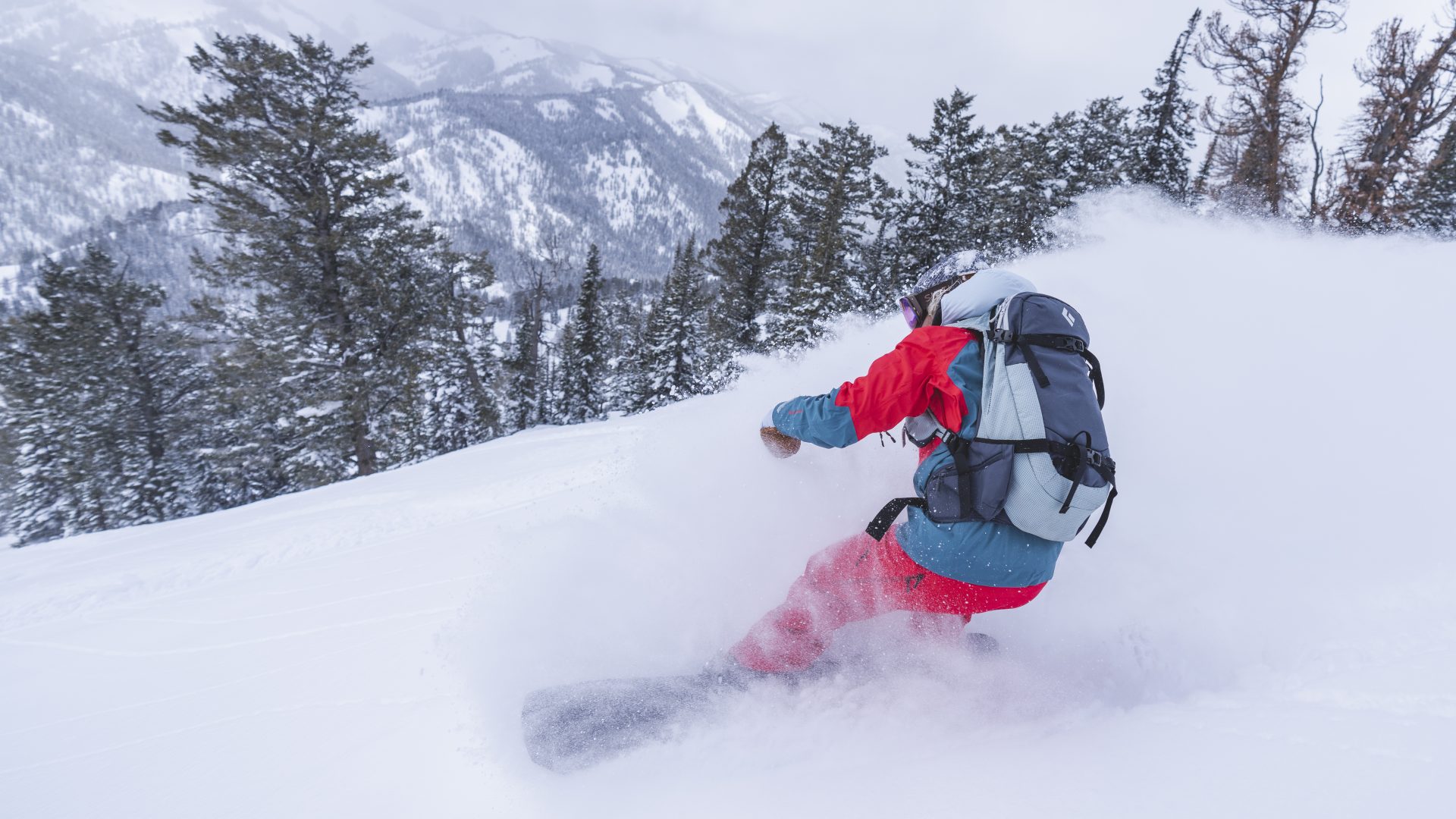Technical Snow Backpacks 2024/25 Retail Buyer’s Guide
Consumers are favouring backpacks that provide the right amount of technical and safety features delivered in a design as compact as possible. This has sent many best sellers back to the designer’s room. By Rocio Enriquez.
The backpack is that piece of kit that can make a difference to your ride in many ways. It can keep you safe by carrying essential safety gear. It can enable longer riding sessions by comfortably carrying your board in the ascents. It is not a question of whether wearing a backpack or not on your day on the mountain, but of which type of backpack to wear.
Customers make their demands known. Durability and lightweight are a given. High functionality is the priority. They want a backpack with well organised storage that is also easy to access, and thoughtful carry options. Safety features, such as back protection and compatibility with safety devices, are important.
However, they are not looking for a backpack overloaded with gimmicks. Minimalist, uncluttered designs are rewarded. The perfect backpack is compact but with all the right technical advantages. This taps into one of the most appreciated factors in a technical backpack: versatility. The ability to use your backpack on and off the mountain, or to use it for many different sports, seals the deal for many consumers.
Most brands’ bestsellers fall into this category. Some examples are Mammut’s Nirvana packs, Picture’s Komit range, Dakine’s Heli Pro pack, Nitro’s Slash 25L, Black Diamond’s Dawn Patrol 25, or Jones’ DSCNT 24L. Versatile back packs promise the biggest growth too. Amplifi bets on their cross-season and multi-sports styles.
DB has great expectations for their Snow Pro Backpack 32L. Mammut is giving their Nirvana packs a more modern look to secure the business from the younger riders. Picture is sprucing up the Komit packs with a new Cordura material. Black Diamond has redesigned their Circle Pack series, aimed for riders who seek a versatile, technical mountaineering pack.
FW24/25 packs
There is a general focus on improving existing bestsellers for next winter. Storage, wearing comfort and compatibility with safety kit are the main areas of development. Mammut is improving the gear organisation in their Nirvana packs and including the option of a back protector. Ortovox has updated their famous Ascent ski touring backpack into the new Switchback backpack. Picture is adding a 34L style to their Komit range, designed for ski touring but also for the resort rider looking for more load capacity.
Rossignol adds an ice axe holder and a back opening. DB highlights their Snow Pro Vest. “A utility vest for resort and side country with a possible integration of the Safeback system”, explains …. Jones has completely redesigned their DSCNT. “The DSCNT 32L, 25L and 19L all have new shapes and the back panels have been re-contoured for a more ergonomic fit”, announces Ruairi Collins. Additionally, the goggle pocket gets bigger, and they have added removable ice axe loops and front/back daisy loops for attaching gear. The 32L model also features an external bottle holder and a redesigned back panel opening. Evoc launches the new Summit. “For those looking for a very light and functional touring backpack, our new Summit can hit the sweet spot!”, says Jan Sallawitz.
Dakine keeps the focus on their three main snow technical backpack lines: the Heli, the Mission and the more technically advanced Poacher series. “All those packs are built for maximum comfort. The padded shoulder straps, the ventilated moulded back panel, the adjustable waist and sternum strap give an ergonomic adjustable fit”, says Rémi Chaussemiche. The Poacher models also offer compatibility with security devices. Black Diamond has redesigned the Circle Pack line. Their new 25L strikes a balance between the previous 22L and 30L versions. It features running-vest style shoulder straps to enhance fit and comfort, drawing inspiration from their expertise in technical running packs. The newly introduced 50L version offers a more voluminous style to cater for multi-day ski mountaineering adventurers.
Nylon and polyester remain the main materials in backpack construction, only now they are 100% recycled. Other materials used are Picture’s new Cordura and DB’s carbon paper and titanium, all recycled too. Nitro introduces a new fabric. “The Waxed Lizard is a durable waxed nylon fabric”, says Ludwig Hargasser. Black Diamond focuses on the optimal balance between durability and light weight. Their Circle styles feature a 210D nylon with Dynex grid. This material claims to be ten times stronger than steel per weight while so light that it floats in water. For their alpine style Vapor 35L they use Challenge Ultra fabric in its Ultra 200 and Ultra 400 variants, known for their exceptional abrasion resistance. Water repellent coatings are free from environmentally harmful fluorocarbons (PFCs).
There is a strong trend of classy, sober solid colours, with black at the top of the preferences. “All of our pack models are black as it is the most universal color”, says Ruairi Collins from Jones. Amplifi does the same, highlighting the part that a longer life cycle of a black product plays in sustainability. DB also bets big on black. Ortovox has made all their hip belts and shoulder straps in black, whatever the backpack main colour. Mammut adds marine and sapphire to black to complete their classic options. Dakine plays a bit with this palette, offering the Naval Academy, a combination of blue, red and grey, and Silver Lining, a black and white combo. The next favourite colours seem to be earthy tones. Mammut offers a seasonal story in marsh and quartz dust. Nitro’s new Waxed Lizard fabric is a natural brown/greyish colour with small details in red. Ortovox chooses toned down earthy colours for their new styles. Rossignol adds light pink and beige to the ever present black.
Dakine has a neat brown colour called Rubber. Their B4BC collaboration next winter is developed in a light green pattern on a faded white, inspired by the forest. Black Diamond’s new Circle packs are offered in Sulphur Green and Carbon with highlights in Octane, tying in with their outerwear collection. There are some bright colours in next winter’s catalogues too. DB offers the Falu Red, “a very red line-up that will make you more visible on the mountains”, says … Red is also Mammut’s choice, pairing it with white on their Aenergy ST packs for a sportier look. Dakine proposes the Night Skyline, a multi colour and pop pattern that brings colourful vibes with an artistic application of different tones.
Sustainability
The whole industry has made a great effort to implement sustainable materials, particularly recycled ones, but sustainability involves other important factors too. It is good to see that many brands are taking these other factors into consideration. Long lifespan of products is key, and building durable items with quality materials is the way to achieve it. Longevity is reinforced by the ability to repair a backpack, giving it a second lease of life.
Mammut, Nitro, DB and Amplifi offer repair services. Waste reduction is another important factor. Mammut, Nitro and Picture constantly optimise their pattern cutting to reduce waste. Picture is big on the upcycling philosophy, reusing the unavoidable remnants for upcycling projects, and offering tutorials to clients about how to repurpose the back packs into new accessories. DB also upcycles their remnant material. Social responsibility is also observed. Amplifi and Ortovox work with the Fair Wear foundation.
DB has recently become a BCorp certified company. Dakine gets involved in actions that give back to the community. Their Glove for Glove programme collects old gloves from users to give them to people in need. Their collaboration with B4BC donates part of their benefits to research against breast cancer. They have also recently made donations to the Maui community, their cradle, after the devastating wildfires. Decarbonisation is on the list too. DB and Dakine work closely with their factories to reduce the ecological footprint. Amplifi is committed to reducing air miles where possible.
Retailer Support
The marketing focus for this category is set mainly on the functionality of the product. Safety and versatility are important purchase drivers and brands make sure they communicate their products’ capabilities loud and clear. Some campaigns use the product as the main vehicle, and others use their ambassadors to tell their story. Dakine relies on their team riders heavily.
Evoc focuses on light and functional ski touring. “We will roll out a campaign together with our athletes and the product managers who developed this new backpack category”, announces Jan Sallawitz. DB run a YouTube series called “Pack Heavy, Chase Light” telling their brand’s story through the people they work with. Black Diamond will offer activity-focused stories that aim to be inspirational and educational.
There is a lot of investment in marketing materials that will carry the message. Picture highlights their videos with their product manager presenting the backpacks. They also produce stop-motion videos of assembled backpacks. . Evoc develops graphic animations to explain the product. DB also produces online tutorials and demos.
Dakine has developed a premium dealers’ programme in which they allocate a special budget for tailored marketing actions for each participating shop. This could be anything, from events, to window displays, or digital marketing activations. Black Diamond has a similar 360º approach, comprising product PR, window displays, and brand stories told by their ambassadors.
There are also specific POS initiatives, such as Mammut’s merchandising aid, Dakine’s new POS program, or DB’s window activation to showcase their Snow Vest. Evoc offers modular, customisable displays. Mammut adds some retailer training in the mix. Nitro supports their retailers by alleviating their stock holding. “In Germany we have a big warehouse where the products are always in stock and ready to be delivered”, says Ludwig Hargasser. After a challenging year and a half, inventories seem to be at a satisfactory level for all brands interviewed. There is sufficient stock to offer good availability, deliveries are timely, and relationships between brands, factories and logistic platforms seem back in health.
Brand Previews














